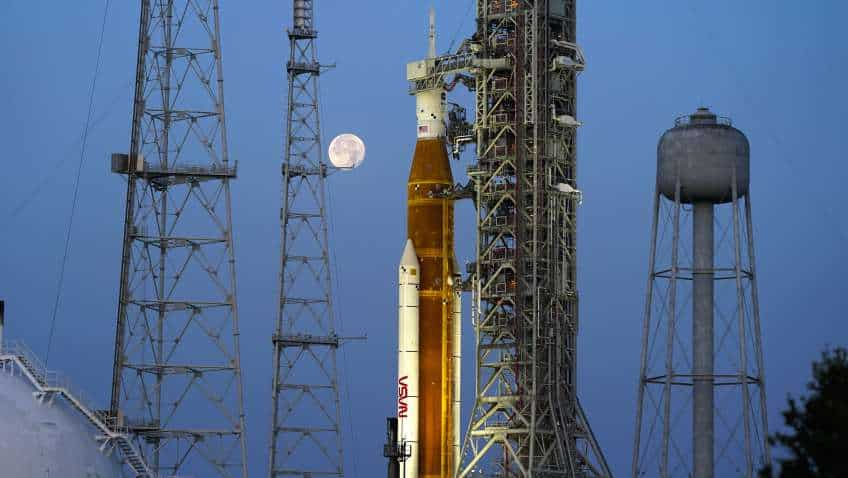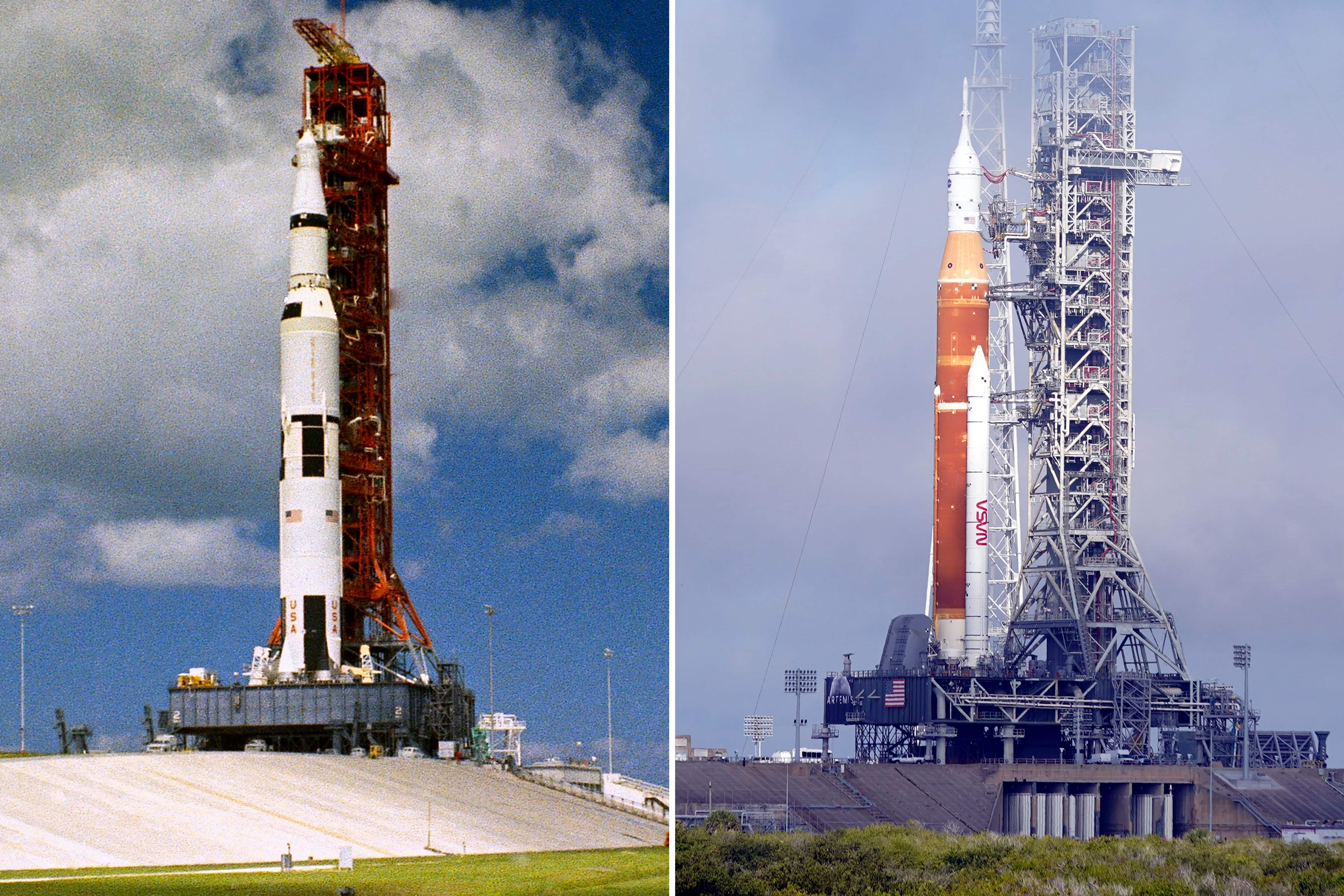NASA Artemis 1 Launch: Top 7 things you must know about NASA's new lunar mission
Moon mission NASA: Artemis I will provide a foundation for human deep space exploration and demonstrate the commitment and capability to extend human presence to the Moon and beyond.

NASA Artemis 1 Launch: NASA's maiden flight of spacecraft Artemis 1 is all set to once again take humans to the Moon. After 1972, this is the first lunar flight by NASA on a spacecraft that is designed to carry humans there. NASA called off the launch of its mighty new moon rocket on Tuesday owing to unexplained trouble in the engine. Though it has not yet set a date for the next launch attempt, the earliest possible opportunity is Friday. Till then, read these seven interesting facts about NASA's Artemis project and gear up for the moon trip.
1. Lay a foundation for human deep space exploration
The first in a series of increasingly complex missions, Artemis I will provide a foundation for human deep space exploration and demonstrate the commitment and capability to extend human presence to the Moon and beyond.
2. The first uncrewed flight to the moon
Artemis I will be the first unmanned flight mission beyond the Moon and return to Earth. This gives them an opportunity to do things that they would've never done with a crew on it in order to try to make it as safe as possible.
3. This single mission holds a very expensive price tag
The price tag for this single mission is more than $4 billion. Add everything up from the program's inception a decade ago till the 2025 lunar landing, and the stakes are even steeper: $93 billion.
![[The Artemis I rocket sits on the launch pad at Kennedy Space Center. (Image: IANS)] [The Artemis I rocket sits on the launch pad at Kennedy Space Center. (Image: IANS)]](https://cdn.zeebiz.com/sites/default/files/3127e3eedbc7b982a536a75ef8b826ee.jpg)
[The Artemis I rocket sits on the launch pad at Kennedy Space Center. (Image: IANS)]
4. Mission named after Apollo's mythological twin sister
The Artemis program has been named after Apollo's mythological twin sister and daughter of Zeus in ancient Greek mythology.
5. Artemis 1 is the first of several missions
Artemis 1 mission consists of Nasa's new super-heavy rocket, the Space Launch System (SLS), which has never been launched before, and the Orion Multi-Purpose Crew Vehicle (or Orion MPCV), which has only flown in space once. SLR is the most powerful rocket ever built by NASA and is capable of carrying six astronauts for up to 21 days in space. The uncrewed Artemis 1 mission, however, may last as long as 42 days.
 {This combination of photos shows the Saturn V Rocket with the Apollo 12 spacecraft aboard on the launch pad at the Kennedy Space Center in 1969, left, and the Artemis rocket with the Orion spacecraft aboard at the Kennedy Space Center in Cape Canaveral. (Image: PTI)}
{This combination of photos shows the Saturn V Rocket with the Apollo 12 spacecraft aboard on the launch pad at the Kennedy Space Center in 1969, left, and the Artemis rocket with the Orion spacecraft aboard at the Kennedy Space Center in Cape Canaveral. (Image: PTI)}
6. Orion spacecraft USP
The surface of the Moon can reach 120 degrees Celsius during the day and drop to -170 degrees Celsius at night. Such large temperature changes can cause significant thermal expansion and contraction of materials, so the Orion spacecraft had to be built with materials able to withstand significant thermal stress without failing. One goal of the mission is to check this, and crucially, ensure that the breathable atmosphere inside the capsule is maintained throughout.
7. Mission of landing humans on the moon by 2025
Nasa has also just announced a short list of landing sites near the Moon's South Pole for the first lunar landing mission, Artemis-3, aiming to land humans there in 2025. Whether they reach that goal will ultimately depend on how things go for Artemis-1.
(With agency inputs)
Get Latest Business News, Stock Market Updates and Videos; Check your tax outgo through Income Tax Calculator and save money through our Personal Finance coverage. Check Business Breaking News Live on Zee Business Twitter and Facebook. Subscribe on YouTube.
RECOMMENDED STORIES

Small SIP, Big Impact: Rs 1,111 monthly SIP for 40 years, Rs 11,111 for 20 years or Rs 22,222 for 10 years, which do you think works best?

Power of Compounding: How long it will take to build Rs 5 crore corpus with Rs 5,000, Rs 10,000 and Rs 15,000 monthly investments?
04:52 PM IST










 What Artemis Accords is and why India joining it signals shift in space strategy
What Artemis Accords is and why India joining it signals shift in space strategy India to sign Artemis Accords, send joint mission to International Space Station: White House
India to sign Artemis Accords, send joint mission to International Space Station: White House NASA's Artemis 1 mission launch for the fourth time today, Blasts off on debut flight | 10 Interesting facts
NASA's Artemis 1 mission launch for the fourth time today, Blasts off on debut flight | 10 Interesting facts Fuel leak ruins NASA's 2nd shot at launching moon rocket
Fuel leak ruins NASA's 2nd shot at launching moon rocket  Artemis 1 launch: How the 'most powerful rocket engine' will propel NASA's plan to grow food on lunar soil - EXPLAINED
Artemis 1 launch: How the 'most powerful rocket engine' will propel NASA's plan to grow food on lunar soil - EXPLAINED